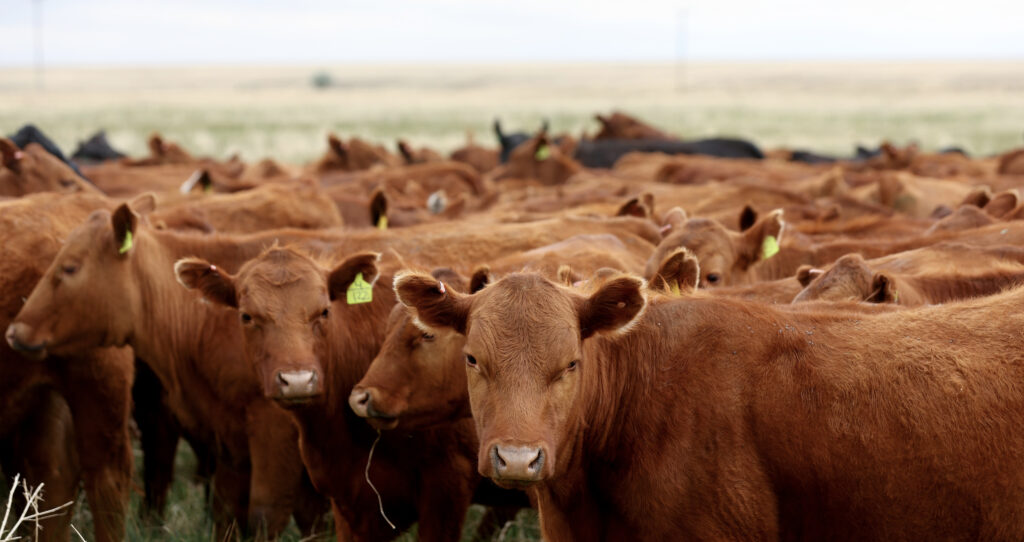Transparency drives investors to cruelty-free food supply solutions

Stakeholders are under pressure to increase transparency in a world driven by consumers who want to make well-informed purchase decisions that reflect their values.
In the wake of the challenges the world is facing, eliminating animal cruelty from our food chain may seem like a low priority. A world still reeling from the pandemic, spiralling cost of living and a war triggering food insecurity, all against the backdrop of climate change, has a lot to worry about. However, underlying all these issues are structural food industry trends that increase the importance of investors fixing the wrongs in our food supply chain.
Aside from the obvious climatic change theme, and the need to consume less meat for carbon reduction efforts in the agriculture industry, there are also structural trends relating to consumer habits and government health priorities.
Trust in governments, institutions and companies is low, especially among generation Z and millennials. Since younger generations want to make well-informed purchase decisions that reflect their values, businesses could respond before governments are ultimately forced to step in. Transparency is a growing business imperative in a world of judgement by social media and the need for companies to walk their talk.
Whereas the concept of supply chain transparency was virtually unknown 20 years ago, pressure from various stakeholders has increased the weight on companies to provide clarity. Consumers want to know where their food comes from, including how it is produced and processed. Researchers at the MIT Sloan School of Management found that consumers are willing to put their money where their mouth is and pay more for products from companies that provide detailed information. The challenge is that today’s supply chains were not designed to be transparent.
The previous lack of incentive for food companies to provide greater transparency meant they could more easily overlook damaging environmental and ethical aspects of their suppliers’ operations. As consumer demand drives deeper supply chain monitoring, this will improve oversight on instances of animal cruelty, especially in many countries where animals are regarded as products and not conscious beings capable of feeling.
Making animal welfare a business and investment issue has been the goal of the Business Benchmark on Farm Animal Welfare, which assesses both supply chain transparency and progress on animal welfare. The benchmark is publicly accessible to investors and is updated annually. Investors with this level of insight into the supply chain of food companies in their portfolio will also have a more precise grasp on the portfolio and reputational risk extended to themselves.
This is especially true for so-called mega farms. Mega farms result from a quest for scale and cheap food, regardless of the consequences. The US has led the world in pioneering intensive large-scale livestock farming. There are now more than 50,000 facilities in the US classified as concentrated animal feeding operations. The UK has also gone in a similar direction, underlined by the number of US-style mega-farms in the UK, which has ballooned to 1,099.
The million-dollar question for investors is whether this is aligned with the underlying trend of tackling climate change and the increasing ethical-conscious shopping habits of the new generation.
Regulating animal welfare
Indeed, the industrialisation of animal farming is not only a major cause of concern for animal welfare, but it is also a major driver of biodiversity loss, deforestation, and implicit in the impending climate emergency.
While regulation should ultimately be the way forward, it is evident that there is currently much work to do to give consumers the clarity they seek. Most US states use what is considered “customary farming practices” from minimum to no animal welfare safeguards — effectively allowing the industry to write its own rules. The American Farm Bureau Federation, one of the most powerful influencers of policy in America, have successfully fought any mandatory regulation or reporting of their pollution.
In the EU, there is statutory recognition of animal sentience through Article 13 of the Lisbon Treaty. However, a recent European Parliament report notes widespread non-compliance. In the UK, after Brexit, MPs voted in 2017 to reject the inclusion of animal sentience in the Withdrawal Bill. However, following public pressure, new legislation was later passed formally acknowledging animals as sentient. While slow, the direction of travel on this point is clear; therefore, investors ought to ensure that companies in their portfolios are aligned appropriately.
Henry Dimbleby, the co-founder of the Leon restaurant chain and a non-executive board member of the UK’s Department for Environment, Food and Rural Affairs, has recently called for a 30 per cent reduction in meat consumption over the next decade to achieve sustainable land use in England. However, the government has not acted on this advice.
Furthermore, food corporations are currently not regulated in monitoring environmental loss created in their supply chains. In reality, the majority of externalities are created here. The World Benchmarking Alliance, a not-for-profit UN Foundation initiative, researched data on emissions and deforestation of the largest 350 food and agriculture companies. Only six food processors and retail companies in this list comprehensively reported progress towards reducing their supply chain emissions. In addition, more than half of animal protein companies have not yet committed to achieving a deforestation-free supply chain, let alone to properly reporting.
Given the challenges of regulation, businesses and investors who recognise the shift from consumers should create pathways for policy funding instead. Policymakers need to see viable nutritious alternatives, such as plant-based proteins and cell-based meat in the food chain. With collaboration from businesses, policymakers can then step in to support nascent sectors and, at the very least, create a level and competitive playing field against the mega food producers. As we saw with the recent baby milk powder shortage in the US, having a food supply in too few hands increases the systemic risk to food supply chains.
For those who question the viability of reducing meat consumption or following a vegan diet, while dietary patterns have proven hard to pin down, meat’s mass consumption in volumes today is a relatively new trend. Historically we are flexible eaters, so with the end of the era of excess, the needs for food security and urbanisation will see supply chains shorten. Food farms increasingly go vertical in modern cities, which primarily lends itself to plant-based food production.
While it has been easier for investors to turn a blind eye to the suffering of animals in the food supply chain, increasing transparency will hasten the structural changes in the food industry. From climate change and deforestation to food security and a younger generation with changing values, investors now have the incentive to be on the right side of changing historical wrongs.
Philip Lymbery is the global CEO of farm animal welfare charity Compassion in World Farming International; Kübra Koldemir is a business writer at not-for-profit SustainFinance
Image via Getty Images
Read Next:

